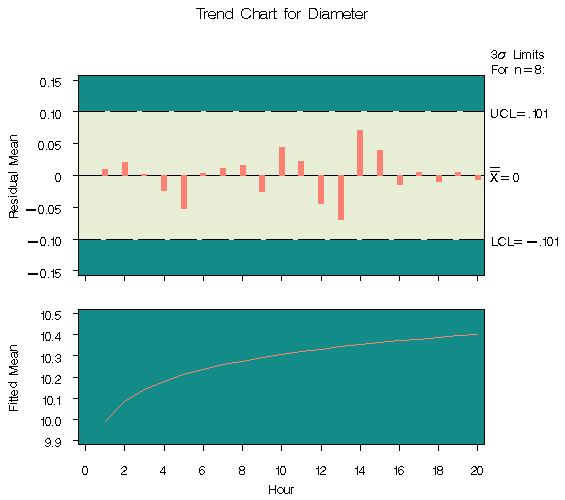Chapter Contents
Previous
Next
|
Chapter Contents |
Previous |
Next |
| Graphical Enhancements |
The third step is to create a trend chart with the SHEWHART
procedure, as follows:
title 'Trend Chart for Diameter';
symbol v=none c=salmon w=5;
proc shewhart history=regdata;
xchart diameter*hour /
stddeviations
trendvar = fitted
cneedles = black
wtrend = 1
split = '/'
nolegend
cframe = vibg
cinfill = ywh;
label diameterx = 'Residual Mean/Fitted Mean';
run;

|
If the data are correlated in time, you can use the ARIMA or AUTOREG procedures in place of the REG procedure to remove autocorrelation structure and display a control chart for the residuals; for an example, see "Autocorrelation in Process Data" . Another application of the TRENDVAR= option is the display of nominal values in control charts for short runs; see "Short Run Process Control" .
|
Chapter Contents |
Previous |
Next |
Top |
Copyright © 1999 by SAS Institute Inc., Cary, NC, USA. All rights reserved.